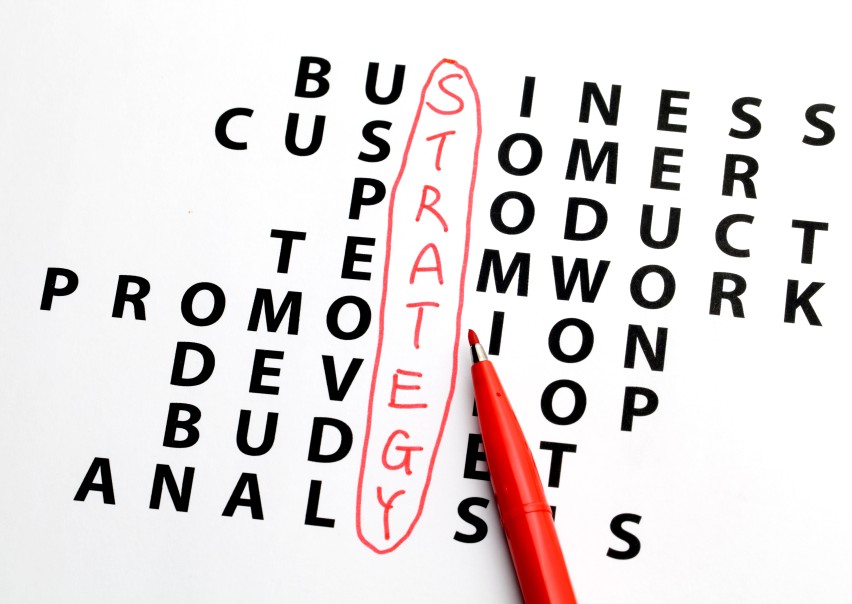If you’ve ever wondered about the role of a head of product and the value and marketing skills they bring to an organization, you’re in the right place. In today’s fast-paced business landscape, where innovation is key, the head of product is crucial in driving success. This article aims to shed light on this pivotal position’s responsibilities, skills, and importance.
A head of product is a strategic leader responsible for overseeing, developing, and managing a company’s product portfolio. They act as the bridge between the business, engineering, and design teams, ensuring alignment and driving the product roadmap forward. Their role encompasses everything from conducting market research and analyzing customer needs to setting product strategy and leading cross-functional teams.
This is a strategic and people-management function that involves building a high-performance product management team. Mentoring new and junior product managers and helping them succeed. Defining and communicating the company’s product strategy. Serving as a liaison between the product team and the company’s stakeholders.
Join us as we explore the multifaceted role of a head of product, the leadership skills often required to excel in this position, and their impact on a company’s growth and customer satisfaction. Whether you’re aspiring to become a head of product or simply curious about the inner workings of product development, this article will provide valuable insights into this dynamic and influential role.
Defining the Product Strategy
As a head of product, one of the key responsibilities is to define the product strategy that aligns with the company’s goals and vision. This involves comprehensively analyzing the market landscape, competitive forces, and emerging trends. By understanding the market dynamics, the head of product can identify opportunities and position the company’s products for success.
To define an effective product strategy, the head of product must collaborate with stakeholders from various departments, including marketing, sales, and engineering. By gathering insights and perspectives from cross-functional teams, they can ensure that the business strategy is well-rounded and considers different aspects of the business.
Furthermore, the head of product needs to assess the company’s strengths, weaknesses, and unique selling points. This evaluation helps formulate a strategy that leverages the company’s core competencies and addresses gaps or limitations. It involves analyzing the business skills, internal capabilities, resources, and the competitive landscape to identify the areas where the company can differentiate itself and create a sustainable competitive advantage.
Once the product strategy is defined, it serves as a guiding framework for decision-making throughout the product lifecycle. It outlines the target market segments, value proposition, pricing strategy, and channels to reach customers. By setting a clear direction, the head of product provides the entire organization with a roadmap, ensuring that all efforts are focused on achieving the desired outcomes.
Conducting Market Research and Analysis
A crucial aspect of the head of a product’s role is conducting thorough market research and analysis. This involves gathering and analyzing relevant data to gain insights into market trends, customer preferences, and competitive dynamics. By staying informed about the market landscape, the head of product can make informed decisions and drive the business’s product strategy and the product development lifecycle in the right direction.
Market research entails collecting data from various sources, such as surveys, interviews, focus groups, and industry reports. The head of product utilizes these sources to understand customer needs, pain points, and emerging demands. This information helps identify market gaps and uncover opportunities for innovation and product development.
In addition to customer insights, the head of product also analyzes the competitive landscape. This involves studying competitors’ products, pricing, marketing strategies, and market share. By evaluating the strengths and weaknesses of competitors, the head of product can make informed decisions on product differentiation and positioning.
Furthermore, market analysis assesses industry trends, technological advancements, and regulatory factors that may impact the product’s success. By monitoring market trends, the head of product can proactively adapt the product strategy to stay ahead of the curve and meet evolving customer expectations.
Do you need help to improve your product development process?
Contact Growth Hackers
Identifying Customer Needs and Demands
A crucial responsibility of the product manager and head of product is to identify and understand customer needs and demands. The product team needs to be obsessively focused on the end user, so they should be out there getting feedback and collaborating with customers to understand how to design features. They gather insights that drive product development and innovation by conducting thorough research and engaging with customers.
The head of product utilizes various techniques to identify customer needs. This includes gathering feedback from existing and potential customers. They also analyze customer support data, social media conversations, and online reviews to uncover pain points, preferences, and expectations.
They focus on bringing the product strategy to align with the business strategy and to deploy that throughout the organization.
Through these efforts, the head of product gains a deep understanding of customer motivations, challenges, and aspirations. This knowledge helps develop products that address specific needs and deliver value to the target market.
Additionally, the head of product identifies emerging trends and shifts in customer demands to adopt a more customer-centric approach. By monitoring market dynamics and staying attuned to industry developments, they can proactively anticipate evolving customer needs and adapt the product strategy accordingly.
Collaborating with Cross-functional Teams
The single most important responsibility of any Head of Product is to develop a strong team of product managers and designers. This means making recruiting, training and ongoing coaching the top priority. Realize that developing great people requires a different set of skills than developing great products, which is why many otherwise excellent product managers and designers never progress to team leaders. Great product managers must be excellent communicators with a knack for turning product goals into actionable bite-sized tasks.
Collaboration is key to a senior product manager’s role as they work closely with cross-functional teams to bring products to life. By fostering effective collaboration, the head of product ensures alignment, synergy, and seamless coordination among different departments. Not only with they work with a product coordinator, a product manager and developer but also with the marketing team, the customer support, leadership team and the executives.
Collaboration begins by establishing strong relationships with stakeholders from engineering, design, marketing, sales, and other relevant teams. The head of product bridges these teams, facilitating effective communication and creating a shared understanding of the product vision and goals.
One of the most important parts of your job as a product leader will be to help your product managers become successful. For newer product managers, this means mentoring and teaching them what you know. For seasoned product managers, it means clearing a path to do their best work and staying out of their way so they can perform. As a product leader, you should put a significant amount of time and energy into this aspect of your job.
The head of product leads cross-functional meetings, brainstorming sessions, and workshops to gather input and insights from different perspectives. They encourage active participation and empower team members to contribute their expertise and ideas. They may delegate some of the more hands-on, daily workings of the product management team, such as processes, personnel and cross-department cooperation, to a leadership position lower down the ladder.
By collaborating with engineering teams, the head of product ensures that the product vision is translated into tangible features and functionalities. They work closely with engineers to define product requirements, provide clarifications, and address technical challenges.
Lobby for the necessary organisational changes to fully establish an effective product management function, if required. This may include securing the necessary empowerment for the product people on your team and establishing a product-led way of working.
In collaboration with design teams, the head of product ensures that the user experience (UX) and user interface (UI) align with customer expectations and usability standards. They provide input on design decisions, conduct usability testing, and iterate based on user feedback.
Help the team members practise sustainable pace so they don’t sacrifice their wellbeing but stay healthy and motivated. This will help retain team members and product leaders. For example, encourage people to take regular breaks from work and don’t expect them to work extra hours, at least not on a regular basis. Grow the product management team. This includes creation job descriptions and interviewing candidates.
Finally, establish clear career paths to retain team members and show them how they can advance their careers. For instance, someone might start as an associate product manager, then move into a junior and subsequently into a senior product manager role, next become a portfolio manager and finally a head of product. Potential career development can be a great incentive.
Leading Product Development and Management
As the leader of product development and management, the head of the product management team plays a pivotal role in overseeing the entire lifecycle of a product. From ideation to launch and ongoing management, they guide the product development process and ensure its execution. As the head of your product team, you will enjoy a vantage point no individual product manager has. You’ll see the bigger picture, for example, in terms of company resources available across all products.
The head of product leads a team of product managers, designers, engineers, and other professionals involved in product development. They provide guidance, support, and mentorship to the team, fostering a culture of innovation, collaboration, communication skills, and continuous improvement.
Whether this is for startup product development process or for enterprise level, in the early stages of product development, the head of product, focusing on multiple life cycle stages, works closely with stakeholders to define the business administration’s product vision, goals, and requirements. They conduct market research, gather customer insights, and assess the feasibility of product ideas, ensuring a comprehensive approach to delivering successful products throughout their entire life cycle.
Based on these inputs, the chief product officer and the head of product collaborate with the team to create product roadmaps, set milestones, and define feature prioritization. They balance competing demands, manage resources effectively, and make strategic decisions to develop the product within the desired timeframe and budget. They’re tasked with building out procedures and processes for the product team, that ensure products are delivered on-time, and to spec. This includes how the product team works with other departments in the organization, such as engineering, support and marketing.
During the development phase, the head of product oversees project management and the execution of the product roadmap. They coordinate the work of cross-functional teams, monitor progress, and resolve any issues or bottlenecks that may arise. Regular communication and feedback loops are established to track progress, ensure alignment, and make necessary adjustments.
Once the product is ready for launch, the head of product management plays a key role in orchestrating a successful market introduction. They collaborate with marketing and sales teams to develop go-to-market strategies, define pricing, and create marketing materials. The head of product also ensures that proper training and support are provided to internal teams to enable a smooth product launch.
Setting Roadmaps and Prioritizing Features
As a head of product, one of the critical tasks to master product development is setting roadmaps and prioritizing features for the product development team. This involves creating a strategic plan that outlines the product’s future direction and determining the most important features and enhancements to focus on.
The head of product starts by gathering input from various sources, including market research, customer feedback, and internal stakeholders. They analyze market trends, competitive offerings, and customer needs to identify the features and functionalities that will benefit the company’s target audience the most.
Contribute to the business strategy. Ensure that the plan is realistic and share it with the product people on your team. This will help them understand the direction the business is heading in and the strategic objectives the entire business is following.
Take inspiration from successful minimum viable product examples and facilitate the selection of the right product management tools, for instance, to capture the product strategy , to describe the product roadmap , and to manage the product backlog . Help the people on your team continuously improve their way of working.
Once the inputs are gathered, the head of product collaborates with the product team to create a product roadmap. This roadmap outlines the planned releases, major milestones, and key features to be developed over a specific period. It provides a high-level view of the product’s evolution and guides the team’s efforts.
Prioritizing features is a crucial aspect of setting roadmaps. The head of product assesses each feature’s potential impact and value based on factors such as customer demand, market opportunity, and business goals. They also consider technical feasibility, resource availability, and dependencies between features.
To prioritize effectively, the head of product may utilize frameworks such as the MoSCoW method (Must-Have, Should-Have, Could-Have, Won’t-Have) or the Value vs. Effort matrix. These frameworks help make informed decisions and allocate resources to the most impactful features.
Now is the time to make your product a success!
Monitoring Product Performance and Metrics
An essential responsibility of the head of product is to monitor and analyze the product’s performance. This involves tracking key metrics, gathering data, and extracting insights to evaluate the success and impact of the product in the market.
The head of product identifies and establishes relevant metrics that align with the product’s goals and objectives. These metrics may include customer acquisition and retention rates, revenue growth, user engagement, conversion, and customer satisfaction scores. By monitoring these metrics, they can assess the product’s performance and identify areas for improvement.
Help establish the right product management processes. For example, agree with the team members on what goals should be used to manage the products, how the product strategy work is done, how often the product strategy and roadmap are reviewed , how the right KPIs are selected , and how product backlog refinement is carried out.
The head of product leverages various tools and sources to gather data and metrics. This includes analytics platforms, user feedback, customer surveys, and sales reports. They analyze quantitative and qualitative data to understand how the product is used, perceived, and valued by customers.
Regular monitoring allows the head of the product to identify trends, patterns, and anomalies in the product’s performance. They can uncover usage patterns, user behavior, and areas where customers may be facing challenges or experiencing friction. This insight helps in making data-driven decisions and prioritizing product enhancements and updates.
Driving Innovation and Competitive Advantage
As a head of product, driving innovation and creating competitive advantage are crucial responsibilities. They are responsible for identifying opportunities for innovation, fostering a culture of creativity, and differentiating the product in the market.
The head of product constantly scans the market landscape and analyzes customer needs and trends to identify areas where innovation can bring value. They explore emerging technologies, industry disruptions, and customer pain points to uncover opportunities for new product features, enhancements, or entirely new offerings.
Innovation is not limited to product features alone; it extends to processes, business models, and market strategies. The head of product encourages experimentation, embraces new ideas, develop a daily action plan and empowers the product team to think outside the box. They foster a culture of innovation where senior product managers and team members are encouraged to challenge the status quo and propose innovative solutions.
To drive innovation, the head of product facilitates cross-functional collaboration and knowledge sharing. They encourage team members to exchange ideas and perspectives, fostering a collaborative environment that nurtures creativity and sparks innovation.
Moreover, the head of product collaborates closely with engineering and design teams to explore new technologies and design methodologies. They stay informed about industry trends and leverage advancements to enhance the product’s functionality, user experience, and performance.
Closing Thoughts About What Does a Head of Product Do
The role of a head of product is multifaceted and vital to the success of a company. They drive product strategy, oversee the product development lifecycle, and ensure alignment with business goals.
The head of product collaborates with cross-functional teams, including engineering, design, and marketing, to deliver high-quality, customer-centric products. They champion user needs, continuously gathering feedback and conducting market research to identify opportunities for improvement.
Additionally, they serve as a bridge between the executive and product teams, providing clear direction, setting priorities, and fostering a culture of innovation. Essentially, the head of product is the driving force behind delivering exceptional products that delight customers and drive business growth.
Growth Hackers provides some of the best digital ads agency services helping businesses from all over the world grow. There is no fluff with Growth Hackers. We help entrepreneurs and business owners work with a skilled head of product, increase their productivity, generate qualified leads, optimize their conversion rate, gather and analyze data analytics, acquire and retain users and increase sales. We go further than brand awareness and exposure. We make sure that the strategies we implement move the needle so your business grow, strive and succeed. If you too want your business to reach new heights, contact Growth Hackers today so we can discuss about your brand and create a custom growth plan for you. You’re just one click away to skyrocket your business.










